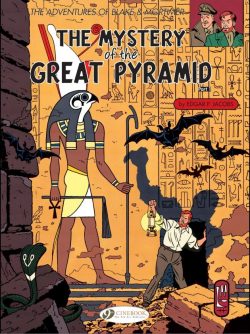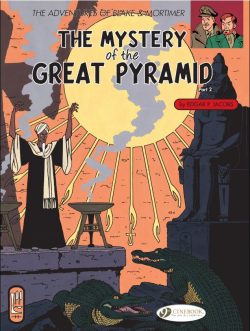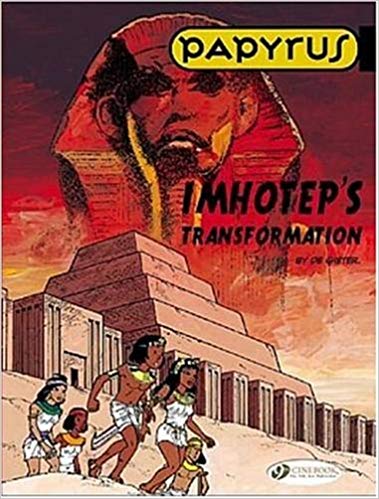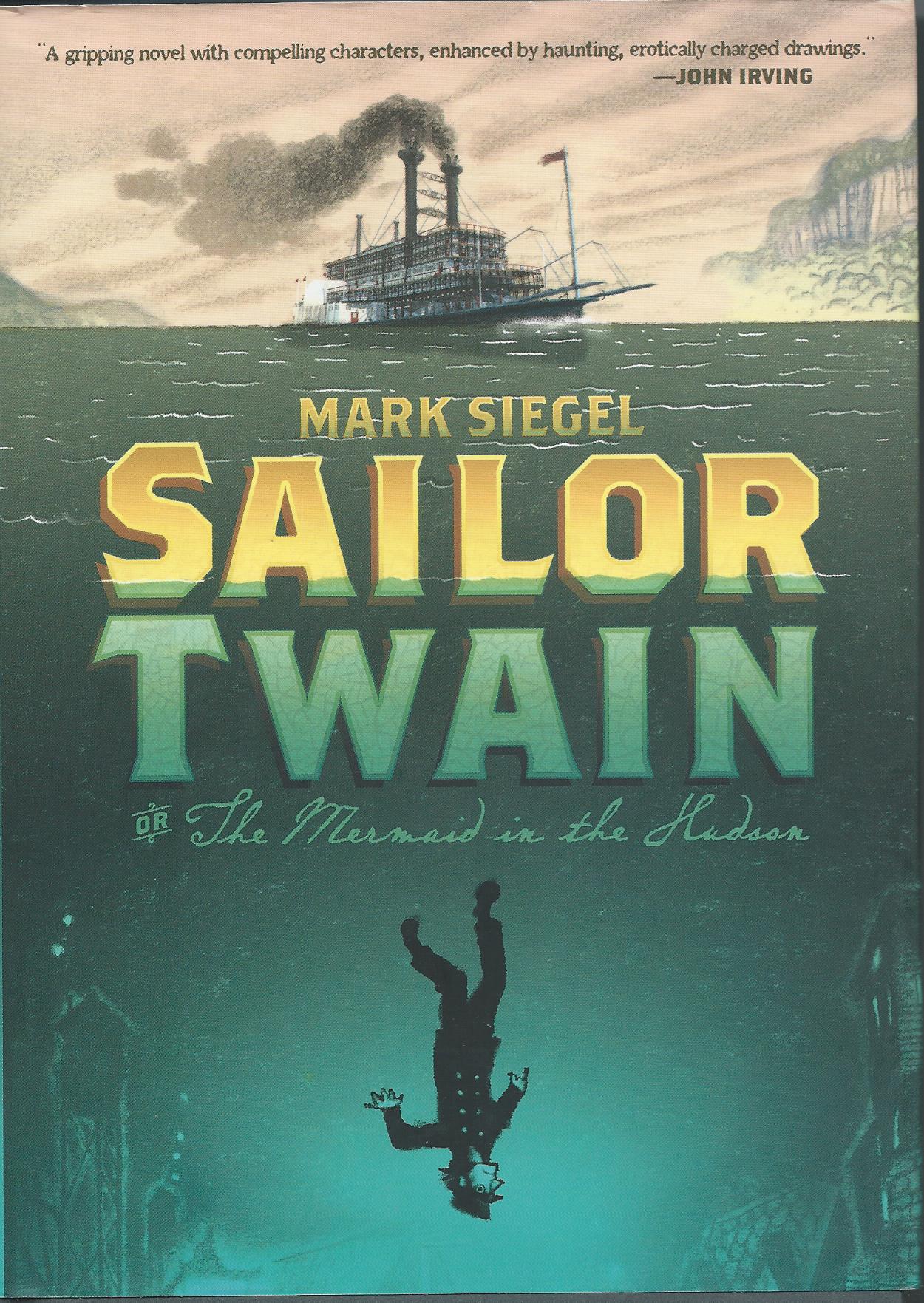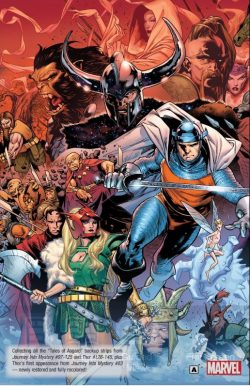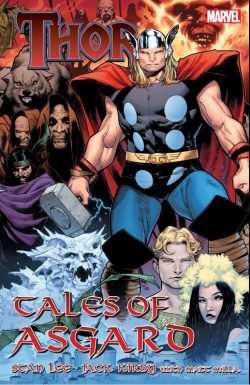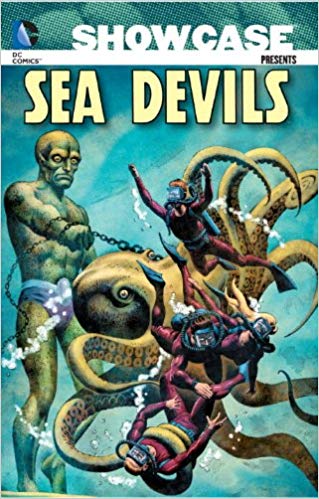
By Robert Kanigher, Bob Haney, France E. Herron, Hank P. Chapman, Russ Heath, Irv Novick, Joe Kubert, Gene Colan, Ross Andru & Mike Esposito, Jack Abel, Bruno Premiani, Sheldon Moldoff, Howard Purcell & various (DC Comics)
ISBN: 978-1-4012-3522-2
Robert Kanigher (1915-2002) was one of the most distinctive authorial voices in American comics, blending rugged realism with fantastic fantasy and outrageous imagination in his signature war comics, as well as for the wealth of horror stories, romance yarns, “straight†adventure, westerns and superhero titles such as Wonder Woman, Teen Titans, Hawkman, Metal Men, Flash, Batman (plus other genres far too numerous to cover here) at which he also excelled.
He sold his first stories and poetry in 1932, wrote for the theatre, film and radio, and joined the Fox Features “shop†at the beginning of the comicbook phenomenon where he created The Bouncer, Steel Sterling and The Web, whilst providing scripts for established features like Blue Beetle and the original Captain Marvel (who we all call “Shazam!†these days).
In 1945 he settled at All-American Comics as both writer and editor, staying on when the company amalgamated with National Comics to become the forerunner of today’s DC. He wrote the Golden Age Flash and Hawkman, created Black Canary and many sexily memorable villainesses such as Harlequin and (Rose and) the Thorn. This last temptress he redesigned during the relevancy era of the early 1970s into a schizophrenic crime-busting super-heroine who haunted the back of Superman’s Girlfriend Lois Lane – which Kanigher also scripted at the time.
When mystery-men faded at the end of the 1940s, Kanigher moved easily into other genres such as spy-thrillers, westerns and war stories. In 1952 he became chief writer and editor of the company’s small combat line: All-American War Stories, Star Spangled War Stories and Our Army at War.
He created Our Fighting Forces in 1954 and added G.I. Combat to his packed portfolio when Quality Comics sold their dwindling line of titles to National/DC in 1956.
In 1955 Kanigher devised historical adventure anthology The Brave and the Bold and its stalwart early stars Silent Knight, Golden Gladiator and Viking Prince whilst still scripting Wonder Woman, Johnny Thunder, Rex the Wonder Dog and a host of others.
In 1956, for Julius Schwartz he scripted ‘Mystery of the Human Thunderbolt’ – the first story of the Silver Age which introduced Barry Allen as the new Flash to the hero-hungry kids of the world.
Kanigher was a restlessly creative writer and frequently used his uncanny if formulaic action arenas as a testing ground for future series concepts. Among the many epochal war features he created were Sgt. Rock, Enemy Ace, The War that Time Forgot, The Haunted Tank and The Losers, but he always kept an eye on contemporary trends too.
When supernatural comics took over the industry in the late 1960s, he was a mainstay at House of Mystery, House of Secrets and Phantom Stranger and in 1975 created gritty human interest/crime feature Lady Cop. Fifteen years earlier he had caught a similar wave (Oh, ha ha, hee hee…) by cashing in on the popularity of TV show Sea Hunt.
His entry into the sudden sub-genre deluge of scuba-diver comics featured the magical contemporary adventure formula of a heroic quartet (Smart Guy, Tough Guy, Young Guy and A Girl) who would indulge in all manner of (undersea) escapades from logical to implausible, topical to fantastical. He dubbed his team The Sea Devils…
These classy yarns still haven’t made it into modern full-colour editions but they are magnificent examples of comics storytelling and if you have to read these lost treasures in mere monochrome, at least that’s better than nothing…
Re-presenting the turbulent, terrific try-out stories from Showcase #27-29 (July/August to November/December 1960) and Sea Devils #1-16 – cover-dated September/October 1961-March/April 1964 – this mammoth black-&-white paperback tome blends bizarre fantasy, sinister spy stories, shocking science fiction and two-fisted aquatic action with larger-than-life yet strictly human heroes who carved their own unique niche in comics history…
In almost every conceivable way, “try-out title†Showcase created the Silver Age of American comicbooks and is responsible for the multi-million-dollar industry and nascent art form we all enjoy today. The comicbook was a printed periodical Petri dish designed to launch new series and concepts with minimal commitment of publishing resources. If a new character sold well initially a regular series would follow. The process had been proved with Frogmen, Lois Lane, Challengers of the Unknown and many, many more.
The principle was a sound one which paid huge dividends. The Editors at National were apparently bombarded with readers’ suggestions for new titles and concepts and the only possible way to feasibly prove which would be popular was to offer test runs and assess fan – and most crucially sales – reactions.
Showcase #27 followed a particularly historic and fruitful run of successful non-superhero debuts which included Space Ranger, Adam Strange, and Rip Hunter…Time Master. At a time when costumed characters seemed to be ascendant but memories of genre implosions remained fresh, it seemed that the premier publication could do no wrong. Moreover, it wasn’t Kanigher and artist Russ Heath’s first dip in this particular pool.
Showcase #3 had launched war feature The Frogmen in an extended single tale following candidates for a US Underwater Demolitions Team in WWII as they perilously graduated from students to fully-fledged underwater warriors.
The feature, if not the actual characters, became a semi-regular strip in All-American Men of War #44 (April #1957) and other Kanigher-edited war comics: making Frogmen the first but certainly not the last graduate of the try-out system. Now, with tales of underwater action appearing in comics, books film and TV, the time was right for a civilian iteration to make some waves…
The drama here begins in ‘The Golden Monster’ (by Kanigher & Heath) as lonely skin-diver Dane Dorrance reminisces about his WWII frogman father – and the senior’s trusty buddies – before being saved from a sneaky shark by a mysterious golden-haired scuba-girl.
Judy Walton is an aspiring actress who, seeking to raise her Hollywood profile, has entered the same underwater treasure hunt Dane is engaged in, but as they join forces, they have no idea of the dangers awaiting them…
Locating the sunken galleon they’ve been hunting, both are trapped when seismic shifts and a gigantic octopus bury them inside the derelict. Happily, hulking third contestant Biff Bailey is on hand and his tremendous strength tips the scales and allows the trio to escape.
Now things take a typical Kanigher twist as the action switches from tense realistic drama to riotous fantasy with the explosive awakening of a colossal reptilian sea-monster who chases the divers until Judy’s little brother Nicky races in to distract the beast…
Temporarily safe, the relative strangers unite to destroy the thing – with the help of a handy floating mine left over from the war – before deciding to form a professional freelance diving team. They take their name from the proposed movie Judy wanted to audition for, becoming forever “The Sea Devilsâ€â€¦
In Showcase #28 Dane’s dad again offers his boy ‘The Prize Flippers’ he won for his war exploits, but Dane feels his entire team should be allowed to compete for them. Of course, each diver successively outdoes the rest, but in the end a spectacular stunt with a rampaging whale leaves the trophy in the hands of a most unlikely competitor…
A second story then sees the new team set up shop as “underwater trouble-shootersâ€, only to stumble into a mystery as pretty Mona Moray begs them to find her missing father. Professor Moray was lost when his rocket crashed into the ocean, but as the scuba stalwarts diligently search the crash site, they are ambushed by underwater aborigines and join the scientist in an uncanny ‘Undersea Prison’…
Only when their captors reveal themselves as invading aliens do the team finally pull together, escape the trap and bring the house down on the insidious aquatic horrors…
Showcase #29 also offered two briny tales, casting off with ‘The Last Dive of the Sea Devils’, wherein a recently-imprisoned dictator from Venus escapes to Earth and battles the astounded team to a standstill from his giant war-seahorse.
The blockbusting battle costs them their beloved vessel The Sea Witch before the crew make use of a handy leftover torpedo to end the interplanetary tyrant. Sea-born giants also abound in ‘Undersea Scavenger Hunt’, wherein the cash-strapped trouble-shooters compete in a flashy contest to win a new boat.
Incredible creatures and fantastic treasure traps are no real problem, but the actions of rival divers The Black Mantas almost cost our heroes their lives…
Everything worked out though, and nine months later Sea Devils #1 hit the stands with Kanigher & Heath leading the way. In ‘The Sea Devils vs. the Octopus Man’, our watery quartet are now stars of a monster movie, but when the lead beastie comes to lethal life and attacks them, all thoughts of fame and wealth sink without trace…
The second tale was scripted by the superbly inventive Bob Haney who riffed on Moby Dick‘s plot in a tale of how Vikings hunted a mythical orca with a magic harpoon before latter-day fanatical whaler Captain Shark mercilessly seeks out the ‘Secret of the Emerald Whale’ with the desperate Sea Devils dragged along for the ride…
Haney wrote both yarns in the next issue, beginning with ‘A Bottleful of Sea Devils’ as mad scientist Mr. Neptune uses a shrinking device to steal a US Navy weapon prototype. With the aquatic investigators hard on his flippered heels, the felon is soon caught whilst ‘Star of the Sea’ introduces brilliant performing seal Pappy who repeatedly saves the team before finding freedom and true love in the wild waters of the Atlantic…
Kanigher returned for #3’s ‘Underwater Crime Wave’ as the Devils clashed with a cunning modern Roman Emperor who derives incredible wealth from smuggling and traps the team in his undersea arena.
Judy then finds herself the only one immune to the allure of ‘The Ghost of the Deep’ as subsea siren Circe makes the boys her latest playthings and her human rival is compelled to pull out all the stops to save her friends…
Sea Devils # 4 led with ‘The Sea of Sorcery’ as the team investigate – but fail to debunk – incredible myths of a supposedly haunted region of ocean, after which Haney detailed how the squad travelled into the heart of South America to liberate a tribe of lost pre-Columbian Condor Indians from a tyrannical witch doctor whilst solving ‘The Secret of Volcano Lake!’
‘The Creature Who Stole the 7 Seas’ (Kanigher) opened issue #5, as a particularly dry period for the trouble-shooters ends after a crashing UFO disgorges a sea giant intent on transferring Earth’s oceans to his own arid world. Oddly for the times, here mutual cooperation and a smart counter-plan save the day for two panicked planets.
Veteran writer Hank P. Chapman joined the ever-expanding team with a smart yarn of submerged Mayan treasure and deadly traps to imperil the team as they solve the ‘Secret of the Plumed Serpent’, before Kanigher returned with a book-length thriller in #6 which sees the Devils seemingly ensorcelled by ancient parchments which depict them battling incredible menaces in centuries past.
Biff battles undersea knights for Queen Cleopatra, Judy saves Ulysses from the Sirens, Nicky rescues a teenaged mermaid from a monstrous fish-man and Dane clashes with ‘The Flame-Headed Watchman!’, but is wise enough to realise that the true threat comes from the mysterious stranger who has brought them such dire documents…
The switch to longer epics was a wise and productive move, followed up in #7 with ‘The Human Tidal Wave!’ as the heroes spectacularly battle an alien made of roaring water to stop a proposed invasion, whilst in #8 they strive to help a fish transformed into a grieving merman from the ‘Curse of Neptune’s Giant!’ This malignant horror’s mutative touch temporarily makes monsters of them all too, but in the end Sea Devil daring trumps eldritch cruelty…
More monster madness followed in #9’s ‘The Secret of the Coral Creature!’ as the team become paragliding US Naval medics to rescue an astronaut. That’s mere prelude to an oceanic atomic bomb test which blasts them to a sea beneath the sea which had imprisoned an ancient alien for eons of crushing solitude, and who had no intention of ever letting the air-breathers go…
A concatenation of crazy circumstances creates the manic madness of #10’s ‘4 Mysteries of the Sea!’ as godly King Neptune decrees that on this day every wild story of the sea will come true, just as the Sea Devils are competing in a “Deep Six Tall Tales†contest.
Soon the incredulous squad are battling pirates in an underwater ghost town, rescued from captivity by a giant octopus thanks to a friendly seal (Good old Pappy!), facing off against aliens of the Martian Canals Liars Club and saving Neptune himself from a depth-charge attack…
The hugely underrated Irv Novick took over as primary illustrator with #11, as the Sea Devils agree to test human underwater endurance limits in an ocean-floor habitat. Soon however, Dane is near breaking point, seeing a succession of monsters from the ‘Sea of Nightmares!’
Kanigher then relinquished the writing to fellow golden age alumnus France E. Herron who kicked off in rip-roaring form with a classy sci fi romp. Here Nicky’s growing feelings of inadequacy are quashed after he saves his comrades – and the world – from the ‘Threat of the Magnetic Menace!’
Always experimental and rightfully disrespectful of the fourth wall, editors Kanigher and George Kashdan turned issue #13 over to the fans for ‘The Secrets of 3 Sunken Ships’, as successive chapters of Herron’s script were illustrated by Joe Kubert, Gene Colan and Ross Andru & Mike Esposito for the audience to judge who was the best.
The artists all appear in the tale conducting interviews and “researching†our heroes as they tackle a reincarnated sea captain, travel to an ancient sea battle between Greece and Persia and meet the alien who kidnapped the crew of the Marie Celeste…
The gag continued in Sea Devils #14 as illustrator Novick came along for the ride as the amazing aquanauts try to end the catastrophic ‘War of the Underwater Giants’ This finds aging deities Neptune and Hercules battle for supremacy in Earth’s oceans.
Jack Abel was the artistic guest star in second story ‘Challenge of the Fish Champions!’, wherein our heroes enter a cash prize competition to buy scuba equipment for a junior diving club.
Unfortunately, crazy devious scientist Karpas also wants the loot and fields a team of his own technologically augmented minions. Before long, the human skin-divers are facing off against a sea lion, a manta ray, a squid and a merman. Nobody specified that contestants had to be human…
Novick got into the act again illustrating #15 as author Herron revealed Judy and Nicky’s relationship to the ‘Secret of the Sunken Sub!’ When inventor Professor Walton vanishes whilst testing his latest submersible, it’s only a matter of time before his children drag the rest of the Sea Devils to the bottom of every ocean to find him and his lost crew.
The uncanny trail takes them through shoals of monsters, astounding flora and into the lair of an incredible sea spider before the mission is successfully accomplished…
Things regained some semblance of narrative normality with the final issue in this compilation as Chapman contributed a brace of high adventure yarns beginning with ‘The Strange Reign of Queen Judy and King Biff’, superbly rendered by the wonderful Bruno Premiani & Sheldon Moldoff.
When a massive wave capsizes the Sea Witch, only Dane and Nicky seemingly survive, but the determined explorers persevere and eventually find their friends held as bewitched captives on the island of an immortal wizard. All they have to do is kidnap their ferociously resisting comrades, escape an army of angry guards and penetrate the island’s mystic defences a second time to restore everything to normal. No problem…
This eccentric and exciting voyage of discovery concludes with ‘Sentinel of the Golden Head’ – illustrated by the always impressive Howard Purcell & Moldoff – as the restored aquatic quartet stumble onto the lost island of Blisspotamia in time to witness a beautiful maiden trying to sacrifice herself to the sea gods.
By interfering, they incur the wrath of a legion of mythological horrors and have no choice but to defy the gods to free the terrified islanders from ignorance and tyranny…
These capacious black-&-white compendia are superb value and provide a vital service by bringing older, less flashy (but still astonishingly expensive in their original issues) tales to a readership which might otherwise be denied them. However, this is probably the only series which I can honestly say suffers in the slightest from the lack of colour.
Whilst the line-art story illustrations are actually improved by the loss of hue, the original covers – by Heath and Novick as supervised and inked by production ace Jack Adler – used all the clever technical print effects and smart ingenuity of the period to add a superb extra layer of depth to the underwater scenes which tragically cannot be appreciated in simple line and tone reproduction. Just go to any online cover browser site and you’ll see what I mean…
Nevertheless, the amazing art and astounding stories are as good as they ever were and Showcase Presents Sea Devils is stuffed with incredible ideas, strange situations and non-stop action. These underwater wonders are a superb slice of the engaging fantasy thrillers which were once the backbone of American comicbooks. Perhaps a little whacky in places, they are remarkably similar to many tongue-in-cheek, anarchic Saturday morning kids’ animation shows and will certainly provide jaded fiction fans with hours of unmatchable entertainment.…
© 1960, 1961, 1962, 1963, 1964, 2012 DC Comics. All Rights Reserved.

